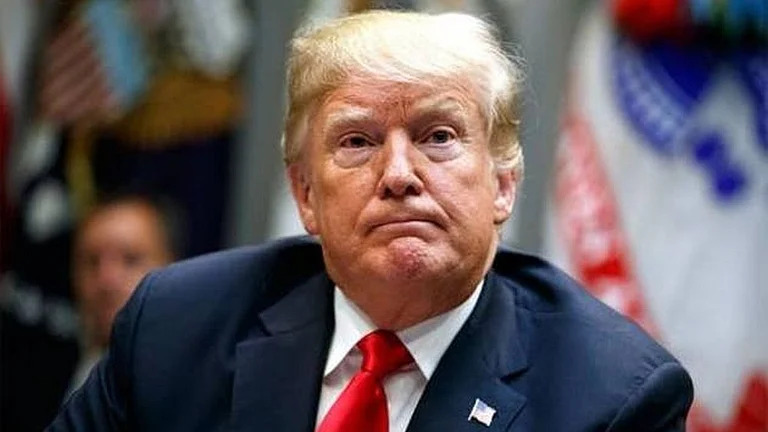Apple exempted from 100% US semiconductor tariffs due to US manufacturing base.
India faces cost, supply chain hurdles despite zero tariffs on smartphone exports.
China offsets tariffs via subsidies, scale; India’s PLI scheme nears expiry.
Experts warn US may target India with semiconductor duties, sparing China.
Trump Exempts Apple From 100% Duty Plans, Impact on India’s iPhone Exports Not Clear
Apple Inc will be increasing its investment in the US by another $100 billion-600 billion in the next four years.
Companies like iPhone manufacturer Apple Inc, which have their manufacturing base of critical components in the United States but assemble their products in other countries like India will be exempted from US President Donald Trump’s plans of imposing 100 percent duty on imported semi-conductors and chips.
Addressing a press conference with Apple CEO Tim Cook at the White House, Trump said, “We will be putting a tariff of 100 per cent on semiconductors and chips, but the good news for companies like Apple Inc is that if you are building in the US, we are committed not to charge them (tariffs on the final product). “
According to a Business Standard report, the company’s chief executive has announced that the company will be increasing its investment in the US by another $100 billion-600 billion in the next four years. This announcement came just days ahead of the report of the Department of Commerce on investigation under Section 232 (of the Trade Expansion Act) aimed at protecting national security on semiconductors and embedded products with semiconductors (mobiles, laptops, personal computers, etc), which is expected to be placed before the President soon.
However, the impact of the move can be different for India as compared to that on China. The tariffs on mobile phones imported from India currently have zero duty but China has been hit with a fenytyl tax of 20 per cent.
According to experts in the industry, the advantage India has on tariffs is neutralised by essentially two factors. Firstly, the cost of producing iPhones in India is around 10 per cent higher than that in China, which is why despite the production-linked incentive (PLI), there is a handicap. Secondly, due the vibrant supply chain, China can absorb another 10-12 per cent of the increase in cost caused by the tariffs, through subsidies from the government and the advantage of scale.
The PLI scheme in India is ending next year for mobile devices and the supply chain is currently in its infancy.
The scenario can further change even more if the US removes the fenytyl tax on China, bringing it down to zero like that for India.
Regardless of Trump’s position on tariffs, the reality under Section 232 is that it has not imposed the same duties on all countries. This is evident in the differential tariffs on the United Kingdom and the European Union on various products compared to others.
Looking at the recent salvo against India the US could also impose a hefty duty on semiconductors for India and leave China out. In simple calculation, a 100 per cent duty effectively means a 40 per cent duty on a smartphone as 35-40 per cent of its cost of production is from semiconductors.

